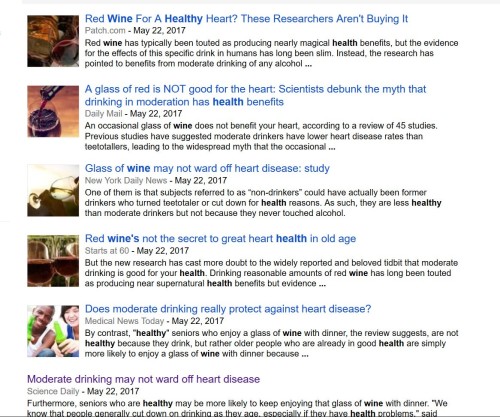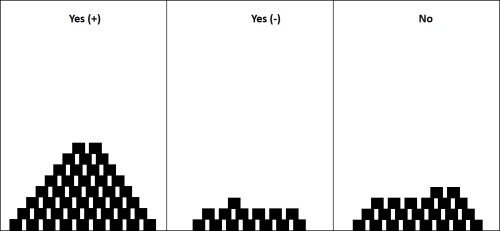
WIRED recently wrote an engaging article detailing the exploits of a company called Integrated Beverage Group which is doctoring up cheap bulk wine and making them taste like popular ones. The general idea of what they are doing isn’t new and quite frankly, I don’t even think this is a break-through moment in the world of wine manipulation, but it does provide a good opportunity to talk about what wine is, philosophically speaking, how producers toe that line in the real world, and when does what’s being done cross into something that is…not wine.
What Is Wine?
Wine is an alcoholic beverage that has been fermented from fruit. That’s it. That’s the technical definition. Sure, most of us tend to think of grape wines when we think of wine, but people will make wine out of any sugary fruit. Philosophically speaking though, wine is a reductive creation like sculpting as opposed to beer, which is an additive creation like painting.
Wine can exist without human intervention. In fact, some might say that wine was discovered and not invented which is why the more romantic of wine makers consider what they do to be guiding the wine to what it should be instead of creating it. If fallen grapes are left in a pile, they may very well ferment when the grape skins burst and the yeast of the local environment gets to eating the sugar in the juice. It may not taste like your favorite Bordeaux, but it is most certainly wine.
What it takes to make the wine is to simply take away all of the parts that you don’t want. This is why debates on whether to force wine makers to label their bottles with an ingredients list is silly because if you get down to what exists in the final bottle, there should really only be one: grapes. At each stage of making wine, you are removing something that you don’t want in the final product. Even the “additives” that get inserted into the wine making process (yeast because natural yeast is finicky and doesn’t always ferment to the wine maker’s liking, fining/clarifying agents to reduce cloudiness or to improve the wine’s clarity, or stabilizing chemicals to make sure the yeast won’t die before finishing fermentation) don’t end up in the final product that you’re drinking. If you ever go on a winery tour, you’ll hear the term “Racking”, which refers to removing the remaining juice from the solids that have settled to the bottom of the tank, just like a sculptor chips away the stone and brushes away the dust to reveal the form beneath.
How Producers Toe The Line In The Real World
As with anything in life, there are always exceptions. Wine making is no different. Depending on where the wine is being made determines the amount and degree to which those exceptions can be made. For instance, some places allow for chapitalization which means adding a small amount of sugar to the juice prior to fermentation in order to have a higher alcohol content, some do not. This is technically an addition to wine, however it is not done to produce wines with an alcohol content beyond what any “natural” wine could produce, it is done to bring the wine within the realm of what the wine consumer is expecting. The same goes for liquid tannin, various acid additions, glycerol, etc., they are all added because the wine through error on the wine maker’s part or just the roll of the dice in this year’s harvest, didn’t meet expectations. This would be akin to patching a chip on the sculpture. There are laws preventing additions to wine that would change their very nature.
When Is A Wine No Longer A Wine?
In the WIRED article, the cheap base wines were being manipulated in order to mimic certain popular wines. Sometimes it is simple blending of a bulk wine with a boutique wine, but other times it comes from severe manipulation in adding esters, acid, etc. where the result product is unrecognizable from the bulk wine it started from. A point that many wine experts have pointed out is that the company doesn’t actually replicate the popular wines, but instead they are just able to recreate a few notable features of the wines. Therefore, they probably should be called “Parody Wines” instead.
Are they any good? Can they be enjoyable? I’m sure they can be a tasty treat and I see nothing wrong with their existence in this world, but philosophically speaking, they aren’t wine. Maybe you could call them fruit beers or wine cocktails, but when you get to a certain level of adding esters, acids, or even color, no longer are they the product of reduction. They are now the products of addition. They also will never stand out by themselves because they are dependent upon the original wine existing in the first place.
This is where labeling laws should step in. Advertising these creations as wine is deceptive to the consumer. They started as wine, but now they’ve become something else. Again, we currently allow this to some degree in the wine world and a good reason for that is to round out the differences between vintages and produce consistent wines year after year within limitations. We would benefit from tightening these limitations just a little than what they already are and then labeling these new creations for what they are. A good reason why this may be important is that there does seem to be mild evidence indicating a correlation between the more ill-effects from drinking wine and the consumption of wines that are generally at the cheapest end of the price spectrum. The reasoning behind this could be that certain congeners (things other than the alcohol) are removed from quality wines that are not from these bulk-produced wines. So these parody wines, while certainly not eliminating the existing “bad” congeners in the bulk wine, could in fact be adding more of them in as well.
Most consumers are somewhat aghast when they find out what passes through their wine before they get to drink it, but the same could probably said for any food product that has a modern production life cycle. The mere fact that some additives are added isn’t so much an issue. However, when those additives change the very nature of the final product, we need to be alerted of this transformation. Again, there’s certainly nothing wrong with enjoying what is produced, and the work that is going into identifying what exactly gives a wine its uniqueness is a worthy intellectual exercise that I personally find fascinating. From a truth-in-advertising perspective though, there will come a point where someone tries to pass off one of these parody wines as the original thing and we should all have the right to know whether they are paying for an original sculpture, chiseled out of marble, or merely a faithful recreation made out of Papier-mâché.



